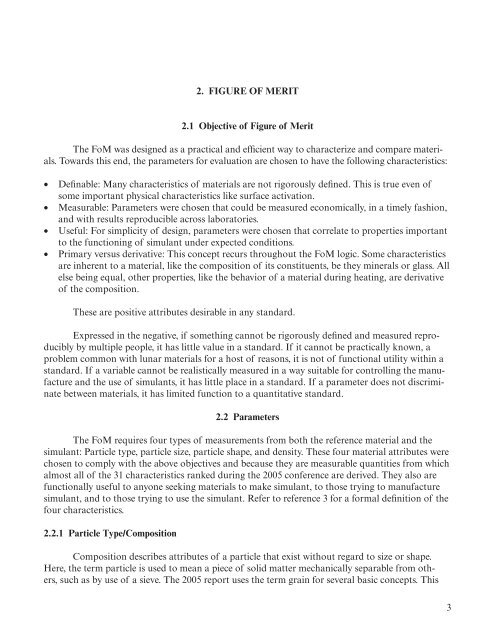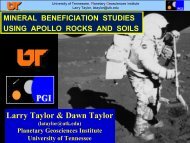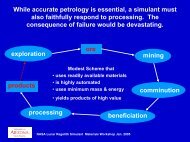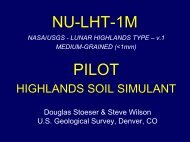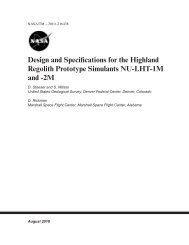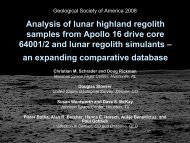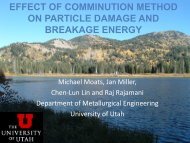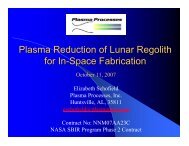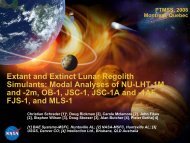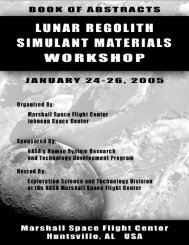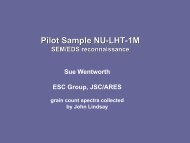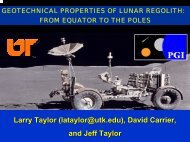Figure of Merit Characteristics Compared to Engineering Parameters
Figure of Merit Characteristics Compared to Engineering Parameters
Figure of Merit Characteristics Compared to Engineering Parameters
You also want an ePaper? Increase the reach of your titles
YUMPU automatically turns print PDFs into web optimized ePapers that Google loves.
2. FIGURE OF MERIT2.1 Objective <strong>of</strong> <strong>Figure</strong> <strong>of</strong> <strong>Merit</strong>The FoM was designed as a practical and efficient way <strong>to</strong> characterize and compare materials.Towards this end, the parameters for evaluation are chosen <strong>to</strong> have the following characteristics:• Definable: Many characteristics <strong>of</strong> materials are not rigorously defined. This is true even <strong>of</strong>some important physical characteristics like surface activation.• Measurable: <strong>Parameters</strong> were chosen that could be measured economically, in a timely fashion,and with results reproducible across labora<strong>to</strong>ries.• Useful: For simplicity <strong>of</strong> design, parameters were chosen that correlate <strong>to</strong> properties important<strong>to</strong> the functioning <strong>of</strong> simulant under expected conditions.• Primary versus derivative: This concept recurs throughout the FoM logic. Some characteristicsare inherent <strong>to</strong> a material, like the composition <strong>of</strong> its constituents, be they minerals or glass. Allelse being equal, other properties, like the behavior <strong>of</strong> a material during heating, are derivative<strong>of</strong> the composition.These are positive attributes desirable in any standard.Expressed in the negative, if something cannot be rigorously defined and measured reproduciblyby multiple people, it has little value in a standard. If it cannot be practically known, aproblem common with lunar materials for a host <strong>of</strong> reasons, it is not <strong>of</strong> functional utility within astandard. If a variable cannot be realistically measured in a way suitable for controlling the manufactureand the use <strong>of</strong> simulants, it has little place in a standard. If a parameter does not discriminatebetween materials, it has limited function <strong>to</strong> a quantitative standard.2.2 <strong>Parameters</strong>The FoM requires four types <strong>of</strong> measurements from both the reference material and thesimulant: Particle type, particle size, particle shape, and density. These four material attributes werechosen <strong>to</strong> comply with the above objectives and because they are measurable quantities from whichalmost all <strong>of</strong> the 31 characteristics ranked during the 2005 conference are derived. They also arefunctionally useful <strong>to</strong> anyone seeking materials <strong>to</strong> make simulant, <strong>to</strong> those trying <strong>to</strong> manufacturesimulant, and <strong>to</strong> those trying <strong>to</strong> use the simulant. Refer <strong>to</strong> reference 3 for a formal definition <strong>of</strong> thefour characteristics.2.2.1 Particle Type/CompositionComposition describes attributes <strong>of</strong> a particle that exist without regard <strong>to</strong> size or shape.Here, the term particle is used <strong>to</strong> mean a piece <strong>of</strong> solid matter mechanically separable from others,such as by use <strong>of</strong> a sieve. The 2005 report uses the term grain for several basic concepts. This3


